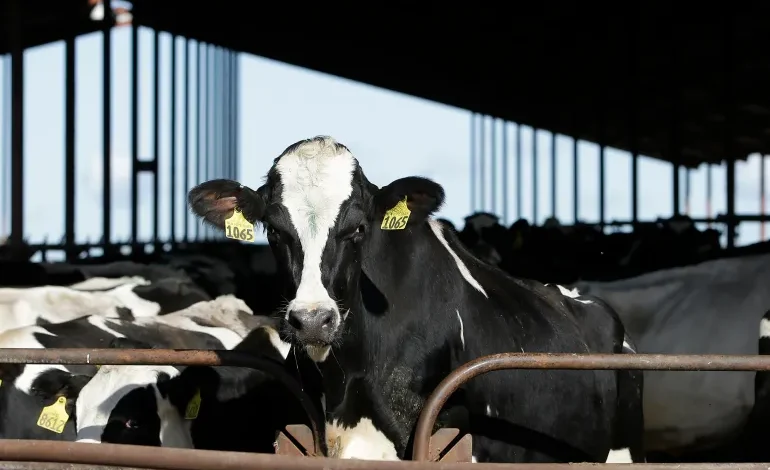Why has bird flu in the US spread to cows and what’s the risk for humans?

The bird flu virus, which was first reported in US poultry farms in 14 states in early 2022, has spread to cows and two humans in the first-ever cases of bird flu in humans in the United States. The same subtype of bird flu is also spreading in other countries, in what experts are calling a “global pandemic for animals”.
US public health officials have been monitoring dairy cow herds, as well as beef and milk products around the country since the first outbreak in cows was reported in March. So far, the US is the only country to have reported bird flu in cattle, but there are fears that it could pose a serious threat to humans, too.
In April, a Texas farm worker contracted the virus in what is believed to be the first-ever transmission of the virus from a mammal – in this case, cattle – to a human. Thankfully, he suffered only mild conjunctivitis – an infection in the eye – and has since made a full recovery. The US’s first-ever bird flu case in a human was reported in 2022 when a poultry farm worker in Colorado was exposed to infected chicken. He reported only fatigue as the main symptom.
However, bird flu can be extremely dangerous for humans. Since the virus – also known as Avian Influenza – was first detected nearly three decades ago in China, some 860 people have been infected by birds in 23 countries, including China, Egypt, Vietnam and Turkey, according to the World Health Organization (WHO). Of those, 463 people died from the virus, giving a huge 52 percent death rate.
So far, the Centres for Disease Control and Prevention (CDC) has detected the virus in more than 200 cows, 9,000 wild birds and some 90 million chickens across the US.
On Friday last week, Canada began implementing stricter import checks for US cattle, following similar measures in Colombia.
So how is bird flu spreading, and could it become a more serious threat to humans?
What is bird flu?
Bird flu is a viral infection that primarily affects birds. Some strains of bird flu can, however, also be infectious to other animals, including humans.
Bird flu belongs to the Influenza A group, one of four types of influenza, and the only one known to cause flu pandemics.
There are also subtypes of avian influenza. Three of these – H5N1, H5N6 and H7N9 – have been found to cause illness in humans as well. While the letters in the names of these subtypes refer to a combination of proteins found in bird flu, the numbers indicate the subtype.
The first and best-known subtype of bird flu is H5N1, which was first identified in domestic geese in the Guangdong province of southern China in 1996. This is the subtype of bird flu which is currently affecting birds and cattle in the US.
In birds, the virus is likely to cause severe disease and death. Cows, particularly older ones, have displayed symptoms such as reduced appetite and lactation when infected.
“This particular strain of the H5N1 virus has been causing a global pandemic for animals – the term is an epizootic disease – and it has affected a lot of domestic poultry production,” said Meghan Davis, associate professor at the Johns Hopkins Bloomberg School of Public Health and trained dairy veterinarian.
How widespread is bird flu among cattle in the US?
Since late March, H5N1 has been reported in around 200 animals in 36 dairy cattle herds in the US states of Colorado, South Dakota, Kansas, Michigan, North Carolina, Idaho, Texas, Ohio and New Mexico.
Some experts suspect that the outbreak may have begun to spread to cows before March – even as early as late 2023 – but was not reported.
“What we don’t know is just how widespread this might be”, said Davis. “This is something where we need lots of surveillance, lots of eyes on this, lots of different ways of looking at the challenge.”
Could bird flu spread to cattle in other countries?
Although there have been no confirmed cases of bird flu in cows beyond US borders so far, the World Health Organization (WHO) has warned that there is a risk of it spreading internationally through the movement of migratory birds.
“With the virus carried around the world by migratory birds, certainly there is a risk for cows in other countries to be getting infected,” said Wenqing Zhang, head of WHO’s Global Influenza Programme, at a news briefing in Geneva in late April.










